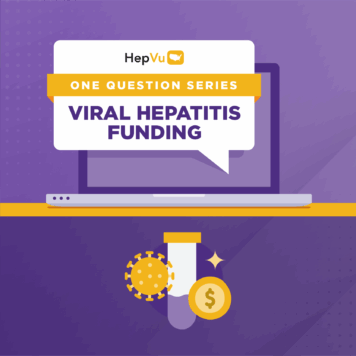ATLANTA, March 3, 2021 – Today, HepVu released new interactive maps visualizing U.S. county-level Hepatitis C-related mortality, illustrating how factors such as age and geographic region affect health outcomes. Published in Hepatology, the data demonstrate that Hepatitis C-related mortality has been decreasing across the U.S. since 2013. However, 1 in 5 counties saw an increase in Hepatitis C-related death rates between 2013 and 2017. Further, in 2017 the highest rates of Hepatitis C-related mortality were primarily concentrated in the West, Southwest, Appalachia, and northern Florida.
“Hepatitis C surveillance is critical to identifying areas that need interventions and expanded services,” said Heather Bradley, PhD, Assistant Professor of Epidemiology at Georgia State University’s School of Public Health and Project Director for HepVu. “This research aims to begin filling the gap in Hepatitis C surveillance across the U.S., and to visualize the epidemic and its burden distribution across states–and now counties–better informing public health decision-making and resource allocation for monitoring, prevention, and care services.”
In recent years, there have been shifts in the epidemiological nature of the Hepatitis C epidemic, including the advancement in treatment options and changes in public health strategies toward elimination, all of which impact Hepatitis C-related mortality at the national- and local-levels. Although these results do not replace the need for a comprehensive and cohesive viral hepatitis surveillance system, these more granular data on Hepatitis C-related mortality provide an important metric for understanding the evolution of the Hepatitis C epidemic.
Key findings include:
- Between 2013 and 2017, 1 in 5 counties saw an increase in Hepatitis C-related death rates, despite Hepatitis C-related mortality decreasing nationally.
- In 2017, the West, Southwest, Appalachia, and northern Florida saw the highest rates of Hepatitis C-related mortality.
- The highest burden of Hepatitis C-related death rates among people under 40 in 2017 occurred in New Mexico, Oklahoma, and Appalachia. The rates in the central Appalachian region continued to increase through 2017. These regions are also experiencing increases of injection drug use as a result of the ongoing opioid epidemic.
- Meanwhile, the highest burden of Hepatitis C-related death rates among people over 40 in 2017 occurred along the West Coast and in the Southwest.
- In 2017, 30% of U.S. counties had a lower age-adjusted Hepatitis C-related death rate than CDC’s National Viral Hepatitis Progress Report’s 2023 goal of less than 3.00 deaths per 100,000.
“Public health initiatives are implemented at the local-level,” said Eric Hall, PhD, Postdoctoral Researcher at Emory University’s Rollins School of Public Health, and lead author on the Hepatology publication. “Although the national Hepatitis C-related death rate has declined, what that decline looks like across counties was unknown until now. These data and maps provide a better understanding of geographic differences in Hepatitis C-related mortality and can be used by local jurisdictions, researchers, and policy makers to understand areas of need and focus as we work toward eliminating viral hepatitis in the U.S.”
Hepatitis C-related mortality in the U.S. at the county-level can be viewed by year from 2005 to 2017 and alongside comparison maps including social determinants of health, such as poverty, high school education, median household income, income inequality, and people without health insurance. HepVu also features opioid indicators, such as opioid prescription rate, narcotic overdose mortality rate, and pain reliever misuse prevalence. HepVu also illustrates the prevalence of Hepatitis C in the U.S. between 2013 and 2016, features state-specific Hepatitis C profiles, and provides downloadable data sets for use in research.
The new method and data were published in Hall et al.’s article in Hepatology titled “County-Level Variation in Hepatitis C Virus Mortality and Trends in the United States, 2005-2017,” and then released on HepVu in March 2021. Findings were developed by researchers at Emory University with researchers from Georgia State University, the University at Albany, and Centers for Disease Control and Prevention (CDC).
About HepVu
HepVu.org is an online platform that visualizes data and disseminates insights on the Hepatitis C epidemic in the U.S. to increase awareness of viral hepatitis and inform public health decision-making. HepVu is a Powered By AIDSVu project presented by Emory University’s Rollins School of Public Health in partnership with Gilead Sciences, Inc. In addition to mapping the burden of Hepatitis C at the county- and state-level, HepVu provides users with educational infographics, state-specific factsheets, and downloadable datasets.



